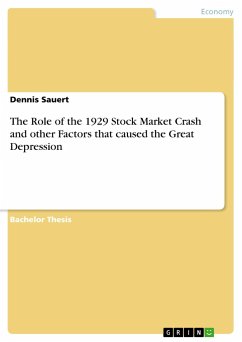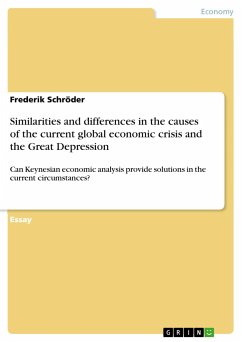Bachelor Thesis from the year 2009 in the subject Economics - History, grade: 1.3, Berlin School of Economics and Law, language: English, abstract: Within macroeconomics, economists agree that there were a number ofcontributing factors that led to the Great Depression. However, most of the discussion is about what was responsible for the depth and the length of this economic event. In the four years starting in the summer of 1929 until 1933,financial markets and institutions, labor markets as well as international currency and goods markets had stopped functioning and it seemed that economic and monetary policy remained helpless in that period. To analyze the Great Depression, Friedman and Schwartz supply one of the most critical but popular explanations. They focus on the monetary policy of the Federal Reserve System (hereinafter Fed) of the United States(hereinafter U.S.) since the Fed allowed a severe contraction in money supplyin the period of 1929 - 1933, even though the Federal Reserve Act of 1913 delegated monetary actions by the Fed to avoid such monetary contraction. Friedman and Schwartz claim that the severeness of monetary contraction resulted from the Fed's passive response to the banking panics in the 1930s when the public increased sharply its demand for currency. However, they admit that the Fed conducted a successful policy during most of the 1920s until a "shift in power within the system and the lack of understanding and experience of those individuals to whom the power shifted" occurred. Herein, they point to the death of Benjamin Strong the Governor of the New York Federal Reserve Bank who had the sagacity and leadership totake measures that would have avoided the Great Depression. Thus, they maintain that monetary contraction in the period of 1929 - 1933 induced the Great Depression due to a misguided policy by the Fed that was eventually in authority for the downturn in economic activity.
Hinweis: Dieser Artikel kann nur an eine deutsche Lieferadresse ausgeliefert werden.
Hinweis: Dieser Artikel kann nur an eine deutsche Lieferadresse ausgeliefert werden.








